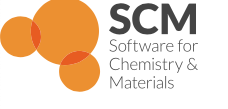This is the new hosting for the Macs in Chemistry website. It is still under construction so there is currently incomplete content. We will be
Blog
There have been a number of updates to Rowan largely based on feedback from users. Rowan is a software platform that makes it possible to run

The Amsterdam Modeling Suite 2024 has just been released. The Amsterdam Modeling Suite is used by researchers in all areas of chemistry, materials science, and
There is still time to register for the RSC CICAG Molecular Simulations in Chemistry meeting 14 June 2024 09:30-17:00, Burlington House, London, United Kingdom. You
When AlphaFold was originally published by Google/Deepmind it was a step change in predicting protein 3D structures and it sparked an upsurge in activity around
As I’ve mentioned before the most popular page on this site is Fortran on a Mac, I’m not a big Fortran user but I do
rdEditor is a simple RDKit molecule editor GUI using PySide2. Code is on GitHub https://github.com/EBjerrum/rdeditor?tab=readme-ov-file The paper is on chemrxiv https://chemrxiv.org/engage/chemrxiv/article-details/65e6dcfa9138d23161b2979c
Whilst everyone is waiting for the WWDC 2024 and the latest plans from Apple to integrate more “AI”. I thought it might be amusing to
Apple have just released OpenELM, a family of Open-source Efficient Language Models. https://huggingface.co/apple/OpenELM
The next Cambridge Cheminformatics Meeting – on 8 May 2024, 4pm UK time; Hybrid, at the CCDC and on Zoom! Full details are on the
This looks very useful for anyone having to process multiple molecules, I particularly like the error processing! The open-source package scikit-learn provides various machine learning